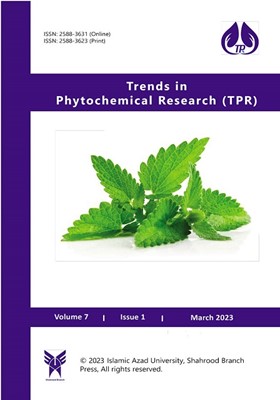-
-
List of Articles
-
Open Access Article
1 - A systematic review on the ethnobotany, essential oils, bioactive compounds, and biological activities of Tanacetum species
Majid Mohammadhosseini Magdalena Jeszka-Skowron -
Open Access Article
2 - Anti-melanogenic, antioxidant potentialities and metabolome classification of six Ocimum species: Metabolomics and in-silico approaches
Sreerupa Sarkar Muddasar Hoda Susmita Das -
Open Access Article
3 - In vivo evaluation of Polygonum bistorta extract effect on blood coagulation factors
Marzieh Moiedie Jafar Vatandoost Toktam Hajjar Behnam Mahdavi -
Open Access Article
4 - Enrichment of polyphenolic compounds from grape leaf extract (Vitis vinifera L.) using macroporous resin and investigating its adsorption kinetics and dynamics
Nadia Sobhani Mahshad Shahriari Mohammad Hossein Jabbari Samad Nejad Ebrahimi -
Open Access Article
5 - Evaluation of the effects of different environmental factors on the quality and quantity of the essential oil of Prangos ferulacea (L.) Lindl.
Samaneh Torbati Gholamreza Dehghan Azizeh Hassanpour -
Open Access Article
6 - The organic extracts from the leaves of Ficus thonningii Blume, Jatropha tanjorensis J.L Ellis and Saroja and Justicia carnea Lindley as potential nutraceutical antioxidants and functional foods
Kingsley Ijoma Vincent Ishmael Ajiwe Stanley Odinma
-
The rights to this website are owned by the Raimag Press Management System.
Copyright © 2021-2025







